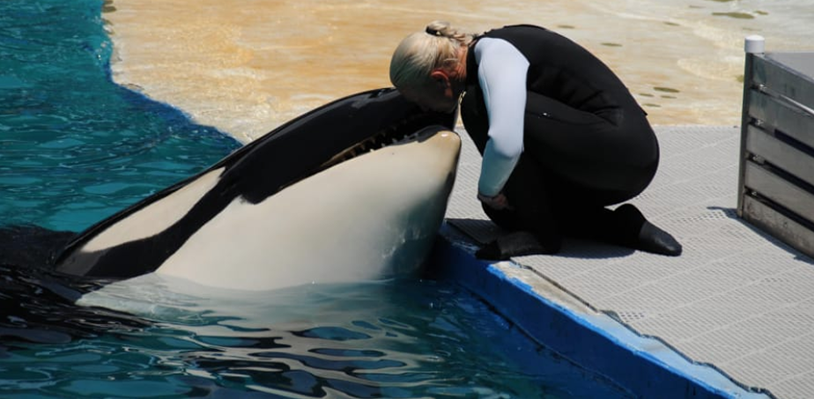The death of the whale at a Miami amusement park just before her planned release highlighted the species’ fraught relationship with humans.
||| FROM THE COLUMBIAN |||
The orca has become the symbol of the Pacific Northwest, perhaps even more so than the salmon they eat. Several events this year have put an international spotlight on the relationship between orcas and humans — including the tragic death of a captive Northwest orca taken in the ’70s as well as the emergence of a new mysterious behavior by orcas in the wild. For such a well-known and much-loved critter, there are still large gaps in our knowledge about them.
In 1931 a juvenile orca swam up the Columbia River and frolicked near Portland, and the city became entranced by its visit. But few Portland residents knew what it was. Many assumed it was some kind of fish. In a place so far removed from the ocean, orcas were a rare, almost unknown sight. They named the critter Ethelbert, and soon it was shot and killed, embalmed, and set up as a sideshow by a former whaler. The dead orca was not a draw, however, and she was later buried on a mountain in Washington.
Some 30 years later, orcas again entered show business involuntarily. A man named Ted Griffin began capturing live Salish Sea orcas in the 1960s. He is most closely associated with an orca named Namu, who starred in a Hollywood movie and was exhibited in a small pen on Seattle’s waterfront. Unfortunately, Elliott Bay pollution cut Namu’s life short.
Namu’s celebrity set off a rush to capture live killer whales. They were sent to marine parks to provide entertainment as aquatic circus acts. Before capturing orcas in the Pacific Northwest was banned in the mid-1970s, 53 Southern Resident orcas were taken. The last survivor of that group, named Tokitae or, alternately, Lolita, died in August after 53 years in captivity at the Miami Seaquarium. She had been part of a mass capture at Penn Cove on Whidbey Island in 1970.
If Ethelbert’s death was tragic and soon forgotten, Tokitae’s passing was widely publicized and grieved. Releasing her from captivity in her home waters was planned for 2024. After so many years in captivity, could she adapt to being free again? Any debate was resolved when she died without ever returning home. A necropsy revealed she had chronic diseases, including “renal disease and pneumonia,” conditions often associated with old age.
**If you are reading theOrcasonian for free, thank your fellow islanders. If you would like to support theOrcasonian CLICK HERE to set your modestly-priced, voluntary subscription. Otherwise, no worries; we’re happy to share with you.**









This from the full article:
“It’s unfortunate, but the capture of live orcas has helped our understanding of them — perhaps a small silver lining. Still, Tokitae’s death brought headlines and sparked a sense of collective guilt now that we know so much more about them, their social life, language, culture and raw intelligence.”
When will we humans have that same guilty sense about war and killing? And do something about it. Is it because we feel animals have unconditional love and acceptance for us, but humans can have hate and defensive feelings, and we have an excuse to counter with killing? You tell me…I’ll never figure it out.